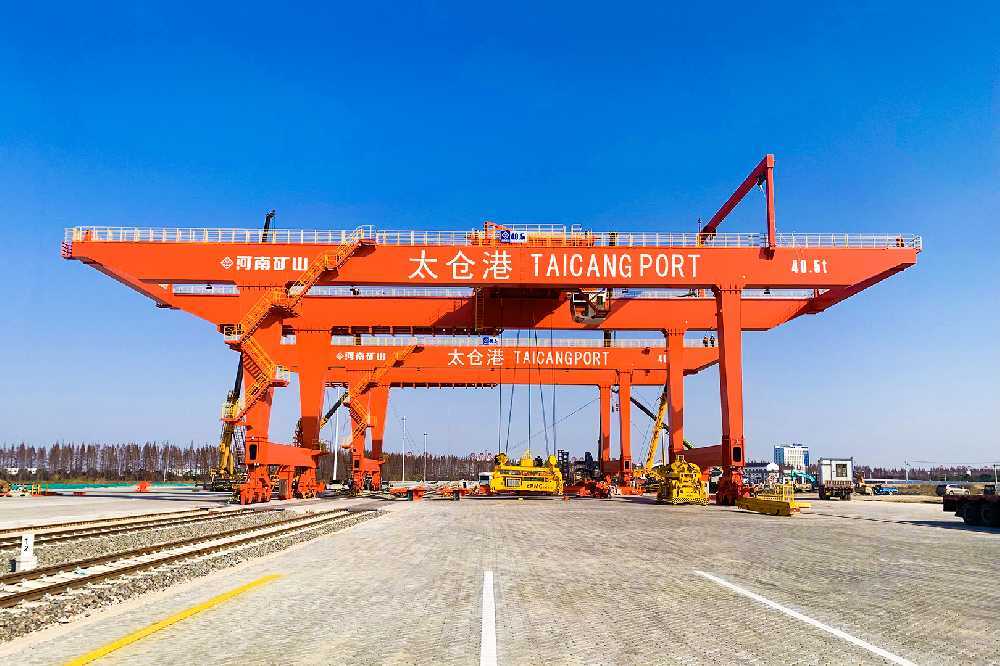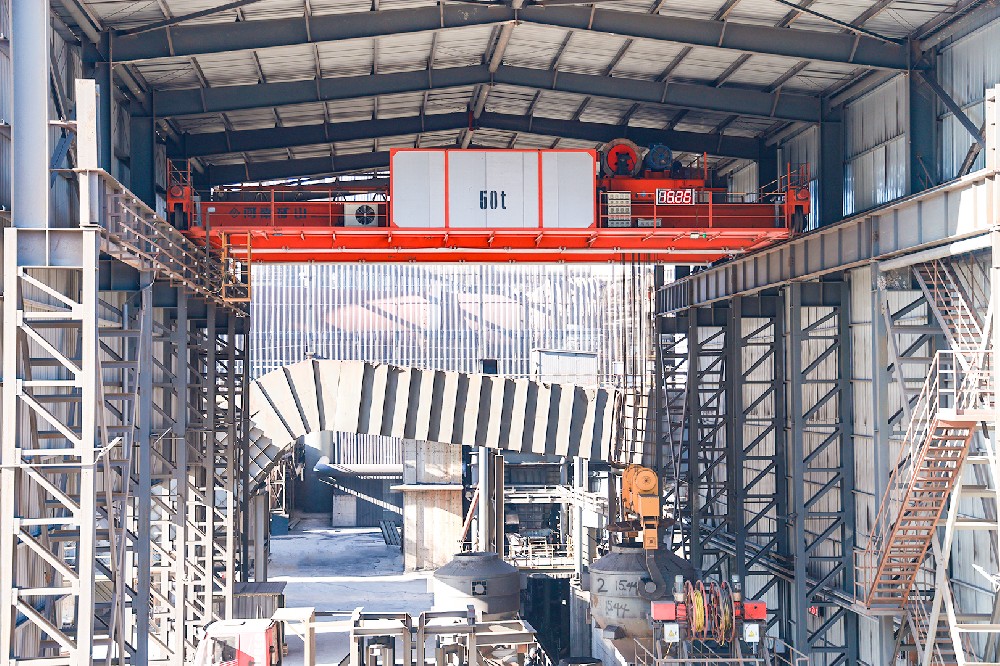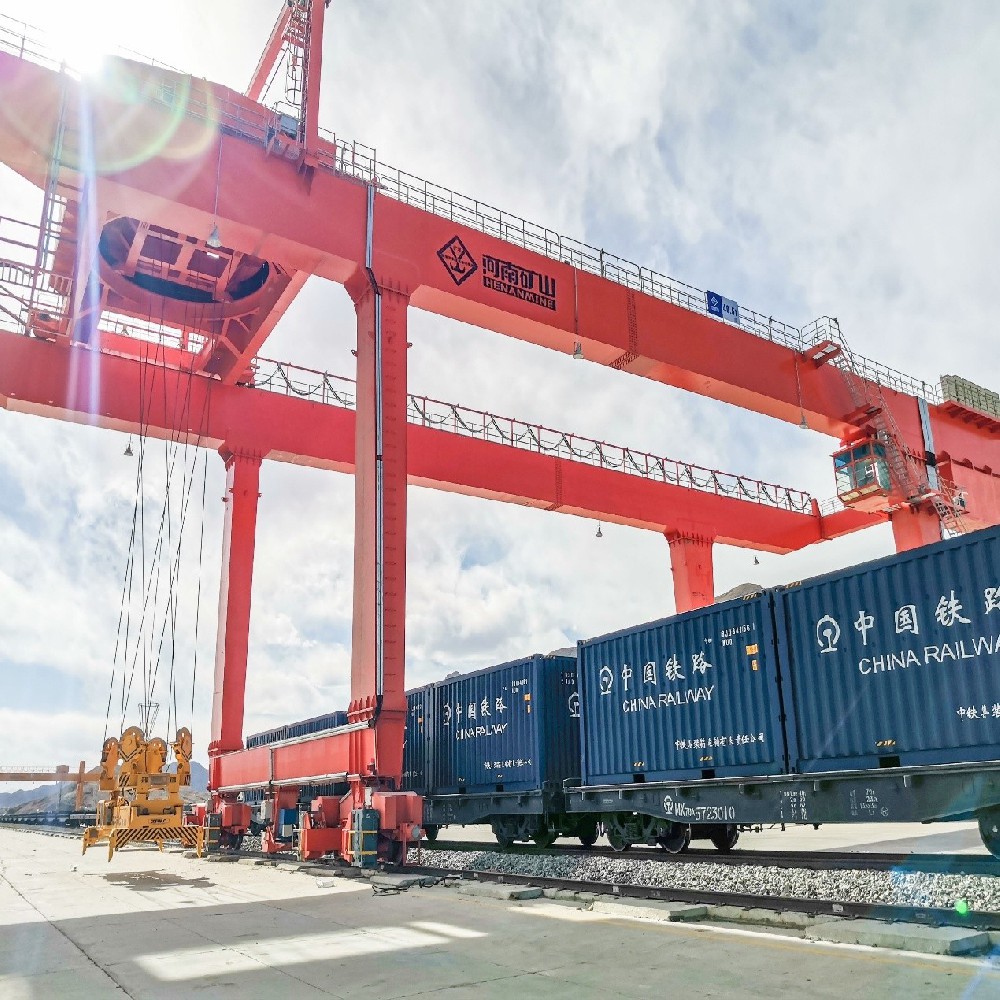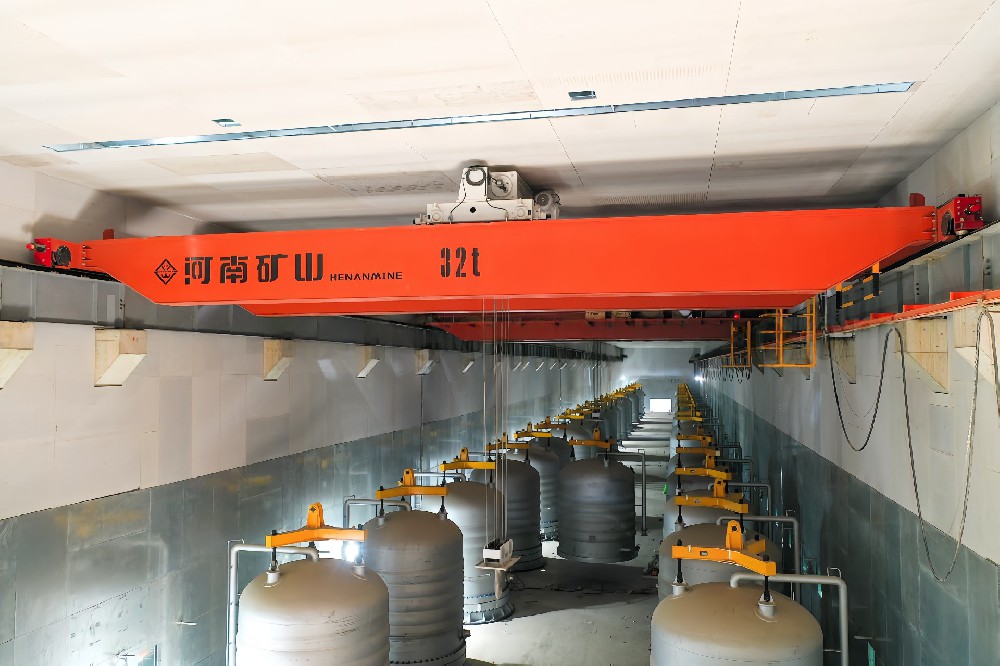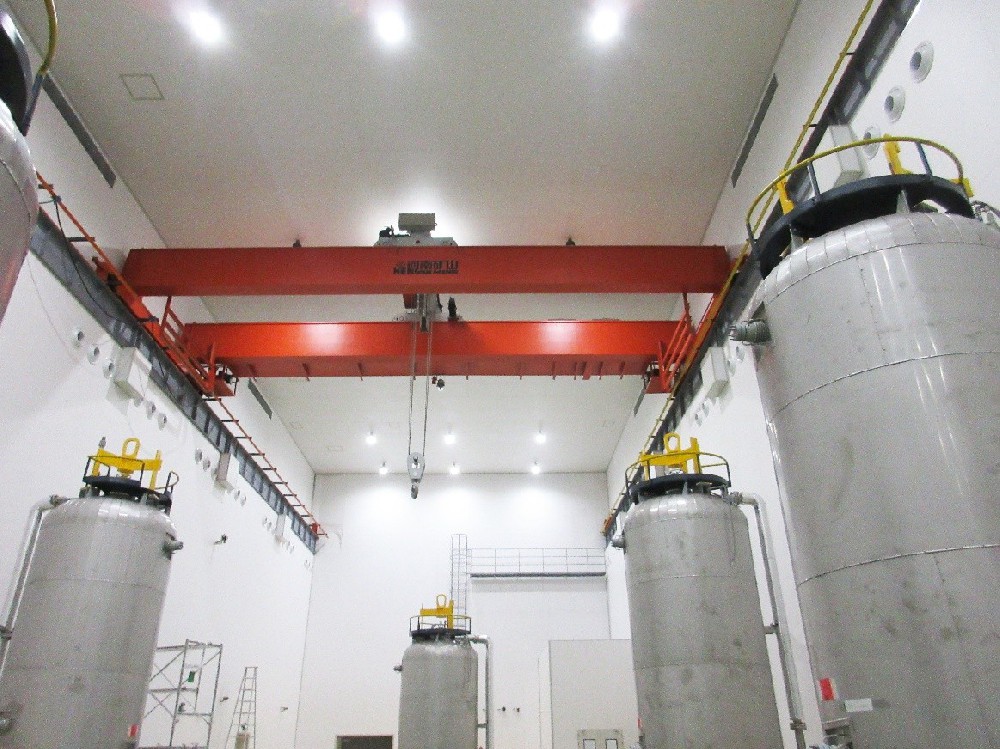- Ibyiza bya Stacker Cranes
-
Igihe:2025-09-13 11:02:52Gusangiza:
Ibyiza bya Stacker Cranes
1. Imikorere y'imikorere: Idafite imiterere y'imihanda, ibasha guhuza n'ibihe bihamye
This represents the most fundamental advantage of straddle carriers, rooted in their tire-based autonomous mobility design.
Unrestricted Mobility: Equipped with self-powered diesel or electric propulsion and steering systems, RTVs traverse entire hardened yards freely without rely on fixed infrastructure like rails or gantries. They navigate between stacks, retrieve containers directly from terminal frontlines for deep-yard transport, or deliver containers from yards to freight vehicles.
High Scenario Adaptability: Ideal for small-to-medium ports, container transports hubs, and logistics parks characterized by "high container volume fluctuations and non-fixed operational zones." RTGs can be quickly deployed to these areas, while rail-based RTGs are limited to fixed tracks with extremely limited flexibility.
Complex Environment Compatibility: In scenarios with slightly uneven ground or require temporary stacking position adjustments, RTGs adapt through tire steering and suspension systems. In contrast, gantry cranes require extremely high ground flatness and track precision, where minor deviations can cause equipment failure.
II. Low Infrastructure Costs: Rapid Deployment Without Dedicated Tracks
The infrastructure investment required for rail-based cranes is their primary drawback, while straddle carriers hold a clear advantage in this regard:
Simple Site Requirements: Straddle carriers only require a hardened concrete surface to work, removing the need for dedicated rail installation or reinforced concrete foundations.
Ku bigo by'ububiko by'igihe gito, ahantu h'ibicuruzwa byihutirwa, cyangwa imishinga mishya, abatwara ibicuruzwa birashobora koherezwa ako kanya ukihagera. Ku rundi ruhande, cranes za gantry zikenera gushyiramo inzira y'umuhanda, gutunganya urufatiro no gushiraho ibikoresho / kohereza - inzira inshuro 3-5.
Low Modification Costs: Adjustment stacking intervals or expanding operational areas requires no infrastructure changes for straddle carriers—only route re-planning. In contrast, adjustment gantry crane tracks necessitates demolishing existing foundations and reconstructing them, incurring extremely high costs.
III. Integrated Pick-Transport-Stack Operation Reduce Equipment Coordination
Straddle carriers combine transport and stacking functions into a single unit, while gantry cranes usually require coordination with container trucks (trucks) for operations, resulting in a more cumbersome process:
Single-Equipment Full-Process Operation: Straddle carriers can directly retrieve containers from quay cranes, transport them to designated stacking locations, and complete stacking without additional equipment. In contrast, gantry cranes follow the sequence: truck deliver container to gantry → container retrieval → truck removes, require frequent coordination between gantry and truck, which often leads to waiting time.
Kugabanya intambwe zo guhererekanya ibicuruzwa: Uburyo bworoshye bugabanya mu buryo butaziguye "amakosa yo guhererekanya kontineri" (urugero, kudahuza neza kw'amakamyo, gutinda kumenya umubare wa kontineri) hamwe n'ubugome bwo gutegura ibikoresho, bigatuma bikwiriye cyane ku mbuga zifite ingano nkeya ya kontineri n'ibikoresho bike bya gahunda.
IV. Site Utilization: More Flexible Layout, Suitable for Small Yard Areas
While gantry cranes offer superior "stacking height capability" (usually 6-9 layers) compared to straddle carriers (3-4 layers), straddle carriers excel in "horizontal space utilization":
No track space occupation: Rail-based gantry cranes require tracks occupying approximately 0.5-1 meter in width, with fixed track spacing causing horizontal yard space wastage; Straddle carriers require no tracks, allowing flexible adjustment of stacking spacing based on container type (20-foot / 40-foot), making them especially suitable for compact yards.
Dynamic Stacking Density Adjustment: During low-volume periods, straddle carriers can consolidated container storage to free space for other operations; during peak volumes, they can quickly disperse stacks to prevent congestion. In contrast, gantry cranes have fixed stacking ranges and cannot dynamically adjust density.
V. Operational Ease: Superior Visibility and Positioning Accuracy
Straddle carriers offer a superior operating experience compared to gantry cranes, especially for precision tasks like "corner-to-corner alignment":
Kugaragara kw'umushoferi: Cab y'umushoferi ihagaze hejuru y'ibikoresho, ituma umushoferi areba mu mfuruka zose enye za kontineri kugira ngo ahuze neza na stacking cyangwa quay crane spreaders. Ku rundi ruhande, gantry crane cabs akenshi iherereye ku ruhande rumwe rwa gantry, isaba abashoferi kwishingikiriza kuri kamera, umwanya wa laser, cyangwa ubufasha bw'abakozi bo ku butaka kugira ngo bahuze, bigatuma imikorere irushaho kugorana.
Greater steering and braking flexible: STACs support all-wheel steering (including crab steering), enabling tight turns and precise adjustment in limited spaces. Gantry cranes (especially rail-mounted types) can only move in straight lines along tracks, with steering completely constrained by track layout.
6. Lower initial investment threshold: More controllable unit cost and maintenance costs
Ku bigo by'ubucuruzi bito n'ibiciriritse, imiterere ya "light-asset" ya STACs irashimishije by'umwihariko:
Igiciro gito cy'igiciro: Igiciro gisanzwe cya straddle (3-tier stacking, ubushobozi bwa toni 40) kigura hafi miliyoni 1-2 z'amapawundi, mu gihe crane ya gantry y'icyiciro cya gari ya moshi (6-tier stacking) ubusanzwe iba hagati ya miliyoni 5-8 z'amarundi. Cranes za gantry zimaze kurambirwa (RTGs) zishobora kugera kuri miliyoni 8-12 z'amapawundi.
Lower maintenance costs: The structure of straddle carriers is relatively simple, lacking complex rail drive systems or mast lifting mechanisms. Wear parts are mainly tires and hydraulic components, resulting in short maintenance cycles and lower costs. In contrast, gantry cranes require maintenance of complex components like rails, trolley travel mechanisms, and hoisting wire ropes, along with periodic rail calibration. Their maintenance costs are about 2-3 times than of straddle carriers.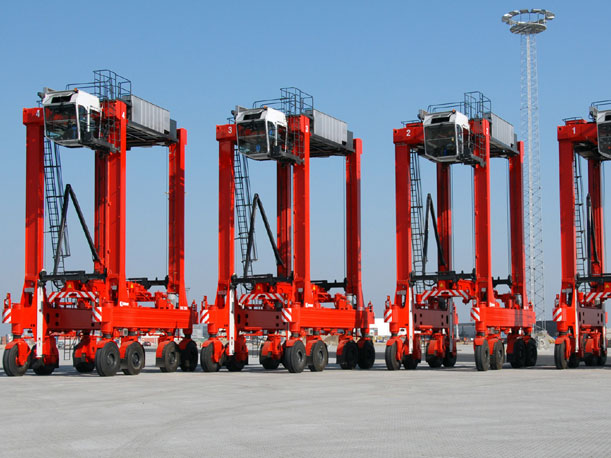
Nk'isosiyete iyoboye isi yose ya crane, Henan Mine Crane itanga ibicuruzwa byuzuye kuva kuri toni 5 kugeza kuri toni 500. Dutanga ibishushanyo byihariye bishingiye ku bishushanyo mbonera by'urubuga rw'abakiriya, imizigo y'imizigo, n'ibipimo by'ibidukikije. Serivisi zacu zuzuye z'ubuzima zitanga ibisubizo bimwe, harimo igenzura ry'ahantu, gutegura igishushanyo mbonera no kohereza, hamwe no kubungabunga buri gihe.

